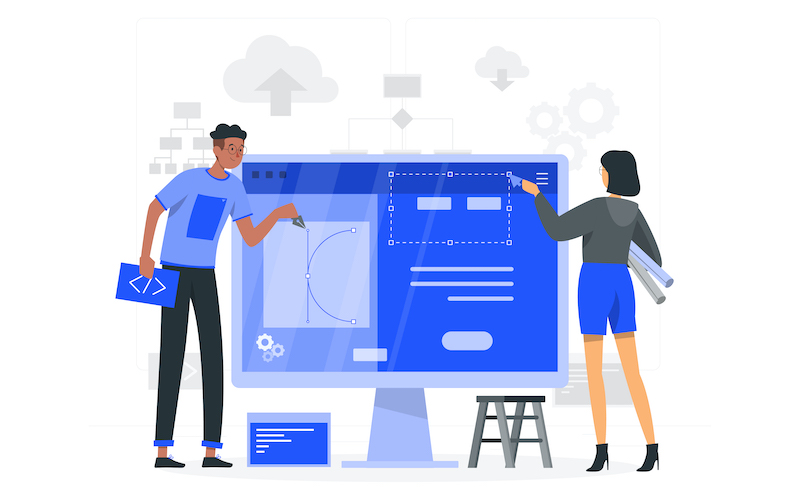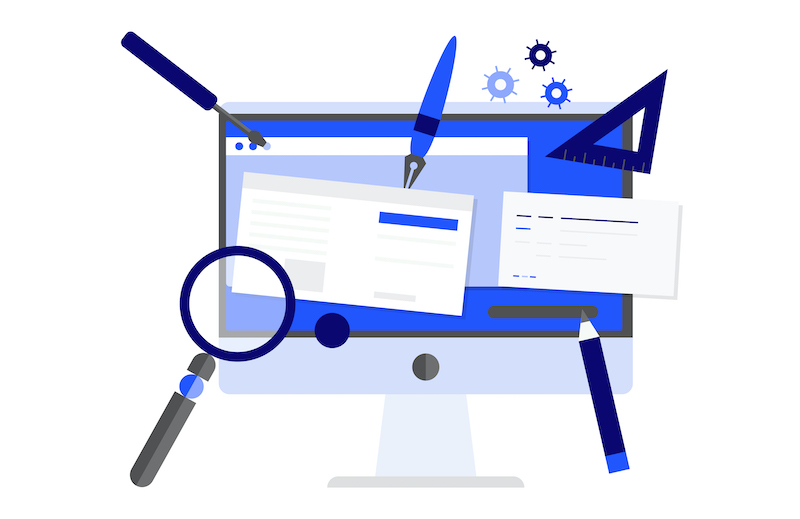12 PRINCIPLES OF GOOD WEB DESIGN
Last Update: 08 April 2022

The design of a website should make it findable, navigable and understandable. The appearance should be consistent with the organisation’s overall branding scheme, including colours, typefaces, logo and images while at the same time communicating its purpose more effectively than any other form of communication such as print or broadcast media. In other words, both form & function are needed to be considered within a website.
We all want to design a website that looks good. But it’s more challenging than you think! There are certain guidelines that will help make your site more appealing. In this article, we’ll go over some principles of good web design and how they can benefit you in the process of designing your site.
1. Website Purpose
Your website needs to accommodate the needs of the user. Having a simple clear intention on all pages will help the user interact with what you have to offer. What is the purpose of your website? Are you imparting practical information like a ‘How to guide’? Is it an entertainment website like sports coverage or are you selling a product to the user? There are many different purposes that websites may have but there are core purposes common to all websites;
- Describing Expertise
- Building Your Reputation
- Generating Leads
- Sales and After Care
2. Ease Of Use and Navigation
Website navigation must be smooth and easy for users. You aren’t going to sell, convert or build your reputation if users can’t get around your website. They need to be able to find what they want quickly without getting frustrated, especially if they’re on a mobile device.
3. Optimize buttons and calls-to-action
While buttons are often the last thing to be added to a web design, they play an indispensable role. They can be the deciding factor as to whether the user continues to navigate your website or closes the window. The buttons on your website should shout, not whisper. That is, they should stand out against the other visual elements on the page and be easy to find and click.
4. Speed and Performance
Waiting for a website to load will lose visitors. Nearly half of web visitors expect a site to load in 2 seconds or less and they will potentially leave a site that isn’t loaded within 3 seconds.
A good website must load quickly and provide content at a fast pace. If images are loading slowly for example, the user can get frustrated and leave your site for a competitor which means loss of business for you. Investing in good hosting and Optimising image sizes will help load your site faster.
5. Visual Hierarchy
Good web design focuses on the visual hierarchy of the page. The visual hierarchy is the order in which a visitor reads or scans a website. Information high on the page, particularly in the top left corner, will be seen first. This is because most people read and scan websites in a similar way to how they read books, magazines and newspapers.
Most people are familiar with reading from left to right and top to bottom in their native language. Therefore, text that appears high up and towards the left will get more attention than text that appears lower down and on the right of a page. A website should take advantage of this common reading pattern by placing important information high up and towards the left, or by using images or other media to draw attention there (more about this below).
6. F-Shaped Pattern Reading
The F- based pattern is the most common way visitors scan text on a website. Eye-tracking studies have found that most of what people see is in the top and left areas of the screen. The F shaped layout mimics our natural behavior, so it tends to be a good design strategy.
A recent eye-tracking study by usability expert Jakob Nielsen showed that users scan search listings in an F shaped pattern: two horizontal stripes followed by a vertical stripe. These three areas are often called “hotspots” because they contain the most important information on any given page and usually receive more attention than the rest of the page.
7. Grid Based Layout
A grid-based layout is an arrangement of elements in a grid pattern. It’s a design system that aligns the content with columns and rows, using negative space to separate them into individual sections.
The grid-based approach is one of the most popular techniques in web design. It has been used by designers for years to create visual order, clarity and harmony. Grids help to structure your design and keep your content organised. The grid helps to align elements on the page and keep it clean. The grid-based layout arranges content into a clean rigid grid structure with columns, sections that line up and feel balanced and impose order and results in an aesthetically pleasing website.
8. Responsive Design
This refers to a website that responds automatically to different devices, whether desktop, tablet or smartphone and delivers an optimal viewing experience for each device based on its screen size, platform and orientation.
This means that the website will be easy to read and navigate without any pinching or zooming required. Responsive layouts adapt their shapes so that they fit into any screen size. This just means that the images resize when you go from landscape to portrait view on your phone or move from a larger screen to a smaller screen or vice versa.
The good news is most modern web designers realize the importance of responsive design and will ensure your website is optimized for this purpose. If you’re having a website created by a professional web designer, they should be able to explain what responsive web design is and how it will affect the performance of your website on different devices.
9. Content
An effective website has both great design and great content. Using compelling language great content can attract and influence visitors by converting them into customers.
Quality content is useful, clear, and guides your audience toward actions you want them to take. SEO should be planned for and woven into the content. SEO can be thoughtfully and tastefully executed with a conversational tone that integrates keywords and phrases that don’t distract from your message. Learn more about about content strategy on our Quick Guide to Content Marketing.
10. Use readable and web-friendly fonts
The role of typography in web design can’t be understated. Using the right fonts exemplifies your brand personality and immediately grabs your audience’s attention. However, it’s not just about looking good. The typefaces you use in your web design also needs to be functional and readable. After all, if the user has to squint just to see your text, they’re likely going to struggle to connect with your message.
11. Limit color and contrast options on your site
Choosing colors for your brand can be complex. While there are many different aspects to consider when deciding on which colors you want to represent your business, one thing is certain: Don’t overdo it with colors or contrasts. Having too many colors on a website can be overwhelming for the user; after all, you want them to focus on specific areas of your site, not be distracted by an array of brilliant hues.
A great way to avoid this pitfall is by sticking with a two-color palette and then using shades of those two colors throughout your site. Keep the background and text as simple as possible; if they have too much contrast, they may be difficult to read.
12. Keep your design consistent
You already know that consistency is key in web design. But it’s important to note that this means more than just keeping your fonts, colors and icons uniform across your branding. It also means keeping the spacing consistent in your layouts, too. This helps give your website a polished and professional feel, which boosts brand credibility.
Conclusion

The bottom line is this: if a design principle can help you create profitable websites, that’s great. But if you chase after a principle just because it’s “cool”, you’re probably doing yourself a disservice. Coming up with cool website designs isn’t always easy—but following design principles thoughtfully will help you in the long run towards creating websites that are more professional, easier to use, and more enjoyable to visit. Click here to find references for Best Web Design
An attractive, well-designed website is one of the most important tools you have to attract visitors and convert them into paying customers. If you’re looking for professional help in designing a successful website, look no further than your Branding Agency Partner at Neu Entity.
Let’s Talk!
If what you see here is relevant for you and can help you grow your business or organisation, we’d love to discuss further with you. Drop us a message or schedule an appointment with us.
